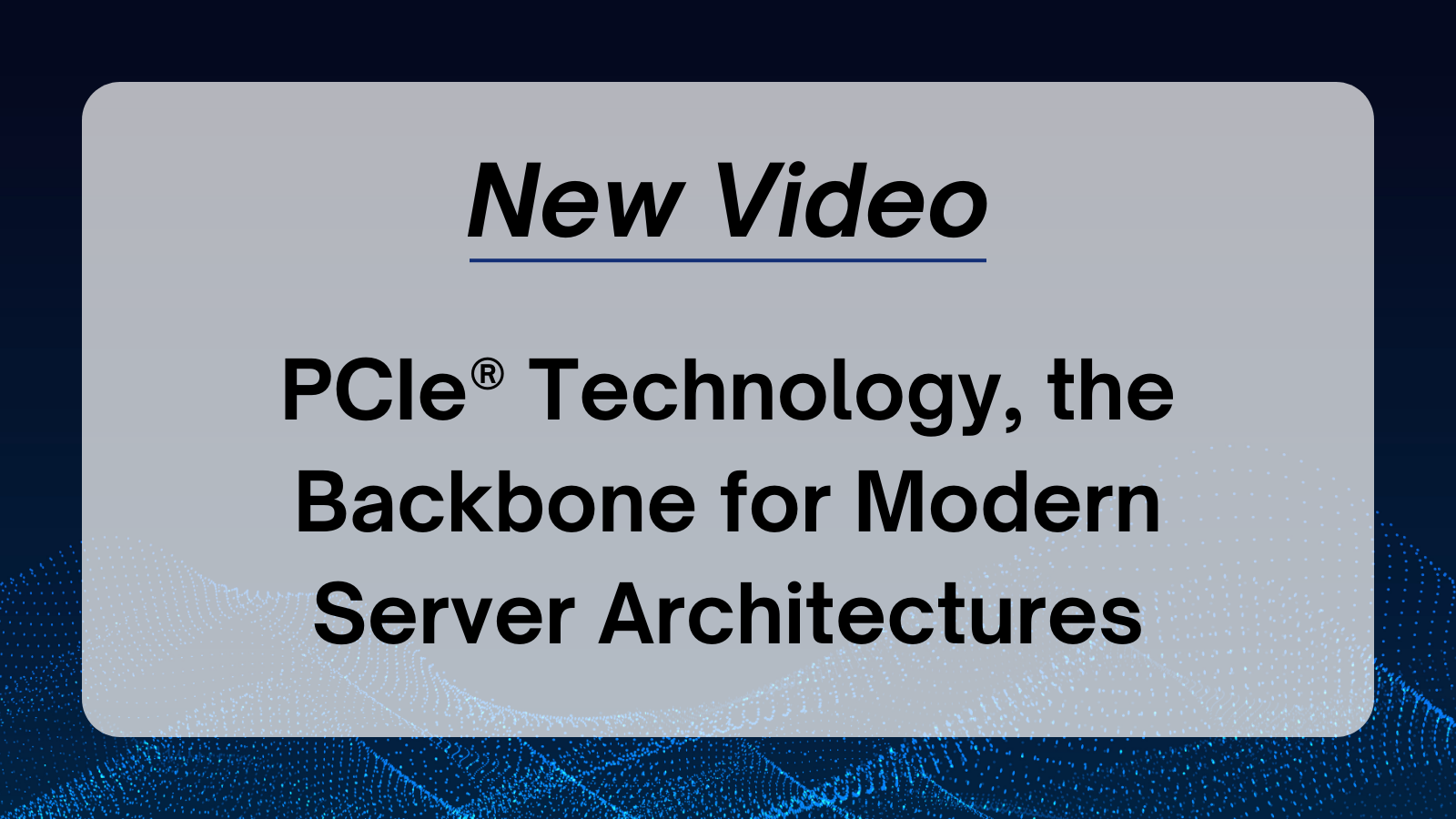New Video – PCIe Technology, the Backbone for Modern Server Architectures

Servers are challenged to process more intricate and diverse types of workloads in cloud, hybrid-cloud and enterprise data centers.
State-of-the-art Generative AI applications require immense computational power supplied by thousands of Graphics Processing Units (GPUs) working in tandem to process complex calculations and massive datasets involved in training Large Language Models (LLMs).
Traditional compute servers must accommodate a diverse set of applications that can be processor, memory, networking, and storage intensive to varying degrees depending on the application use case.
PCI Express® (PCIe®) technology has long been an integral part of servers. It was initially used for point-to-point connectivity of network adapters and storage controllers to a single host processor. PCIe technology has now expanded to interconnect many processors to each other, and it has further advanced to connect memory using memory expansion. The PCIe specification continues to evolve its use case as the critical connectivity backbone on which all servers operate.
To stay ahead of demanding workloads and evolving server architectures, PCIe data rates have increased to 32 GT/s per lane with PCIe 5.0 and will soon reach 64 GT/s per lane with PCIe 6.0. PCIe technology delivers high bandwidth for faster data transfers between the server components, including processors, memory, networking, and storage. Each new generation of the spec doubles the data transfer rate, allowing for faster and more efficient communication between server components.
The Power and Versatility of PCIe Technology
PCIe technology offers many benefits for a diverse set of high-performance servers, including:
- Scalable connectivity via expansion cards and peripherals such as compute accelerators, network modules, graphics cards, and storage devices in addition to memory via CXL
- Hot-plug so components can be swapped out while the server is running, minimizing system downtime
- Multiple PCIe link widths (x1, x2, x4, x8, x16), enabling servers to right-size the connectivity bandwidth link to the solution requirements
- Backwards compatibility, preserving customer investment and extending equipment longevity
Overall, PCIe technology is a powerful and versatile connectivity interconnect that is essential for the performance and scalability of high-performance servers and it will continue to play an important role in meeting the demands of new and emerging applications.
The Future of PCIe Technology is Evolving in AI Servers
PCIe technology is critical to enabling AI infrastructure today and in the future. As AI and LLMs continue to grow, the industry will need larger compute clusters to deliver the processing bandwidth required for these applications. PCIe technology enables high bandwidth connectivity and disaggregated architectures within servers and between servers at rack-scale. New connectivity solutions will further advance PCIe technology adoption in applications across compute, memory, storage, and networking including cabling solutions to extend reach and further optimizations to the protocol to support lower latency use case.
According to the “PCI Express Market Vertical Opportunity” report from ABI Research, PCIe technology adoption in AI systems will grow from $450 million in 2022 to $2.8 billion by 2030. PCIe technology gives data center architects unprecedented agility through forwards and backwards module interoperability – shortening time-to-value and lowering deployment risk.
Watch the Video to Learn More
For more insight into the role of PCIe technology in servers, watch the video featuring PCI-SIG member Aanchal Sharma of Astera Labs.
